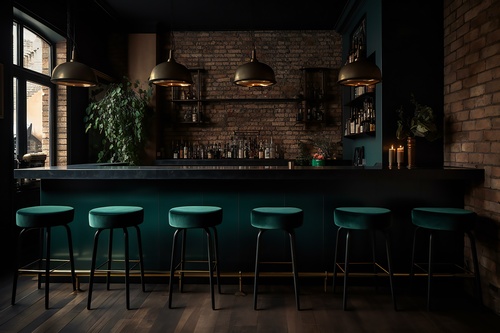In our relentless pursuit of comfort style in workplaces and homes, ergonomics has always been a key factor when it comes to furniture design. It’s no longer just about finding an aesthetically pleasing seat; it is also about having something that feels good. Uncomfortable stools can result in back pain, poor posture, and overall bad experience for users. And that will have far-reaching effects on your productivity, experience, and even health.
On the contrary, ergonomically designed stools can promote good posture, encourage long and encourage long conversations, on top of improving the aesthetics of your space. Therefore, it pays to understand the important features that contribute to ergonomics, as you navigate through the plethora of modern stools. This guide talks about five factors you should consider when selecting ergonomic stools for comfort and support.
Understand the Purpose of the Stool
We know that ergonomic stools are used in various settings, including offices, laboratories, kitchens, workshops, and medical facilities. The specific requirements of your environment will dictate the type of stool that best suits your needs.
Office use: For desk work, a stool with adjustable height and a swivel base can offer comfort and encourage movement.
Workshops or laboratories: Stools designed for tasks requiring more mobility or support for extended periods are crucial for safety and comfort.
Home or kitchen use: If you need a stool for cooking or other standing activities, look for one that supports your posture and reduces strain on your lower back and legs.
Seat Design and Padding
The seat design is critical in promoting comfort and minimizing pressure on the hips and thighs. Ergonomically designed seats have a sloped edge that encourages the thighs to rest comfortably without pinching the back of the legs. Also ensure the shape of the seat conforms to the natural curve of your body to provide proper support.
Padding: A stool with adequate padding combines softness and support. And while too much padding may feel cushy, it can lead to a lack of proper support over time. On the other hand, too little padding can result in discomfort. It is advisable to go for high-density foam or memory foam.
Seat shape: A contoured seat that curves to match your body’s natural form can alleviate pressure on the pelvis and tailbone, providing better support.
Height and Adjustability
Height adjustability ensures the stool can accommodate different tasks and desk heights, allowing for proper posture and minimizing strain. The right height allows your feet to remain flat on the floor with your thighs parallel to the ground. A good stool should come with the following features:
Gas lift mechanism: This allows you to easily adjust the height to suit your comfort level.
Adequate adjustment range: Check to ensure the height range accommodates your needs, including sitting and standing positions (if necessary).
Footrest consideration: Be sure the stool offers a footrest for additional support, if you’ll be using it for extended periods.
Material and Durability
The material of the stool plays a significant role in its comfort, durability, and ease of maintenance. That’s why you should opt for high-quality materials that can withstand prolonged use without wearing out quickly.
Upholstery materials: Breathable fabrics, such as mesh, can help with air circulation, especially if you’re sitting for long hours. Leather or faux leather are also durable options that are easy to wipe clean.
Frame construction: Choose a stool with a sturdy frame made from steel or aluminum for long-term durability and weight support.Easy to clean: You may be planning to use your stools a setting where spills or dirt are common (such as in kitchens or workshops). That calls for materials that are easy to clean and maintain.



